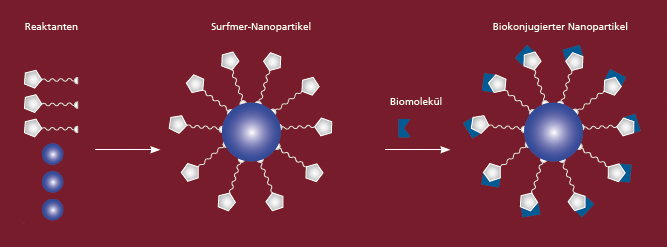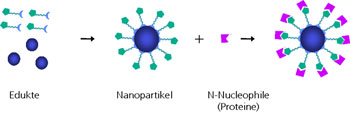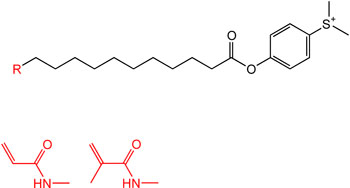Special attention is paid to the design of the surface, for example by binding biological molecules.
Functional particle surfaces
Production of nanoparticles with active ester surface



With the surfmers, we can produce nanoparticles with controlled adjustable properties in one step by emulsion polymerization. Typical particle diameters range from 80 to 200 nanometers. The nanoparticles carry a defined number of anchor points for further chemical reactions of the particles, for example for the immobilization of biomolecules or the covalent crosslinking of nanocomposites.
With the help of surfmer technology, we create particles that are about 1000 times smaller than the beads currently used for the immobilization of biomolecules. This system reduction to nanoscopic dimensions results in an enormous increase in specific surface area - with the smallest mass of nanoparticles, large surfaces can be provided for handling biomolecules or for marking cell surfaces. The active ester unit as anchor group offers optimal reactivity with sensitive biomolecules and at the same time ensures maximum stability during production, storage or transport.
Click chemistry functions
We provide the surface of inorganic and organic particles with functional groups that bind to surfaces with the complementary binding partner according to the principle of click chemistry without further activation.
 Fraunhofer Institute for Interfacial Engineering and Biotechnology IGB
Fraunhofer Institute for Interfacial Engineering and Biotechnology IGB